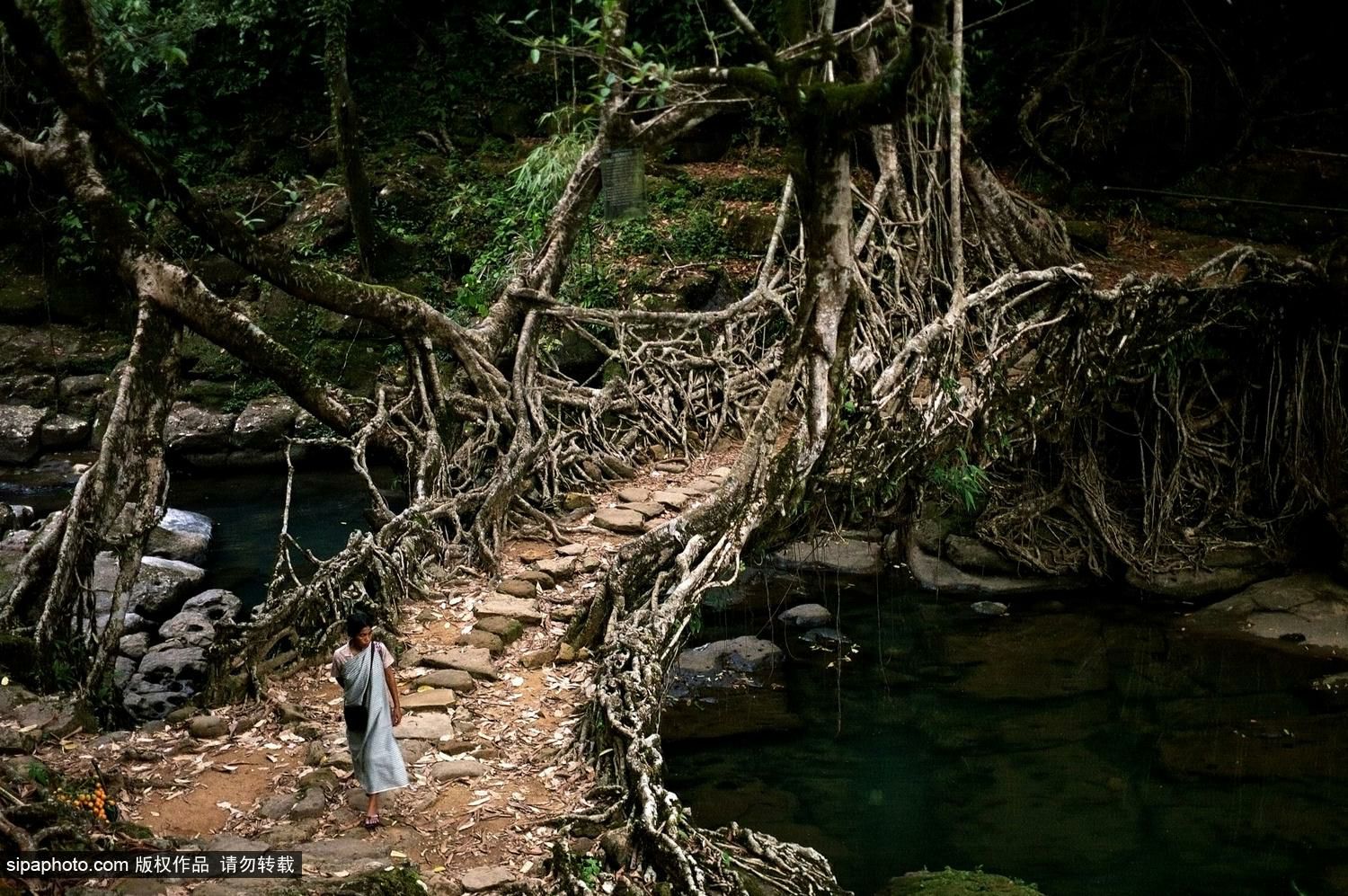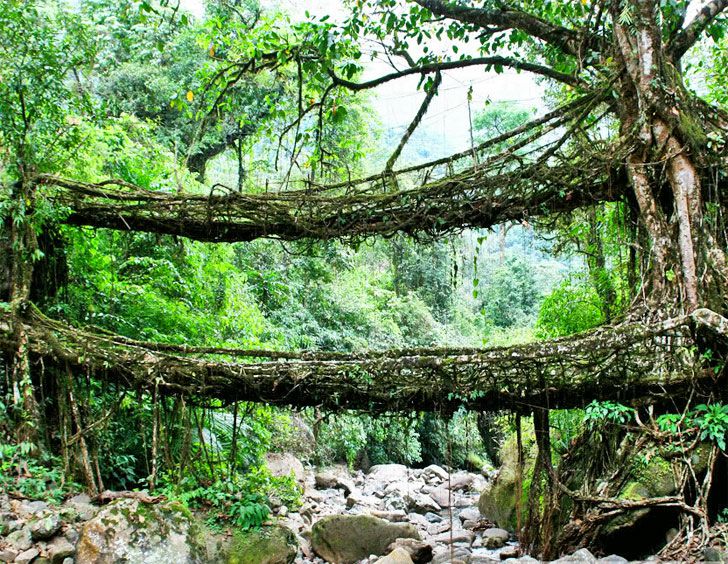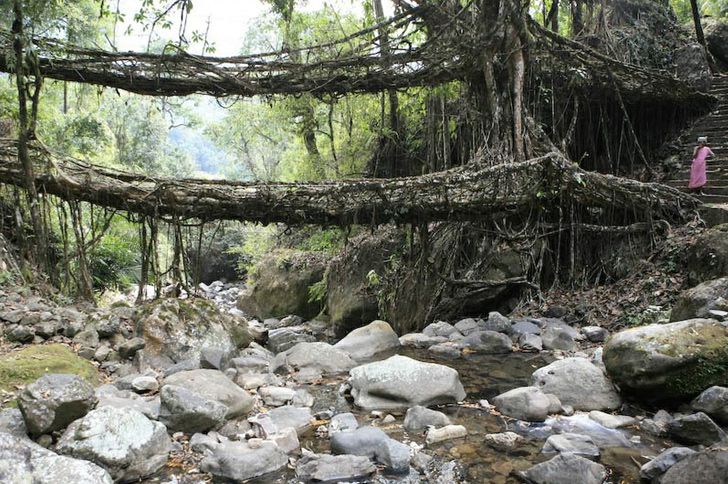A Native American Tribe Plants Living Root Bridges
For centuries, the War-Khasi tribe, indigenous to the Meghalaya state of northeastern India, have been using a unique technique to construct bridges across the many rivers and streams in their territory. They plant living roots of the Ficus elastica tree on either side of a river, and allow the roots to grow and entwine with each other until they form a sturdy, living bridge.
This method of bridge-building is not only sustainable and eco-friendly, but it also strengthens the community ties and cultural traditions of the War-Khasi tribe. The bridges, which can last for centuries, are considered sacred and are maintained by the community as a symbol of their resilience and resourcefulness.
Recently, a Native American tribe in the Pacific Northwest of the United States has taken inspiration from the War-Khasi tribe’s technique and has started planting living root bridges of their own. The Skokomish tribe, located in the Olympic Peninsula, has faced many challenges in recent years, including natural disasters and economic hardships. But by turning to their cultural heritage and adopting sustainable practices, they have been able to revitalize their community and protect their environment.
The Skokomish tribe has also adapted the technique to suit their local environment, using the roots of the red cedar tree instead of the Ficus elastica. The bridges not only serve as a means of transportation, but they also provide a connection to their past and a sense of pride in their traditions.
The use of living root bridges is a testament to the ingenuity and resourcefulness of indigenous communities around the world. By utilizing sustainable practices and preserving their cultural heritage, these communities are able to overcome adversity and build a better future for themselves and their environment.
Hits: 0












